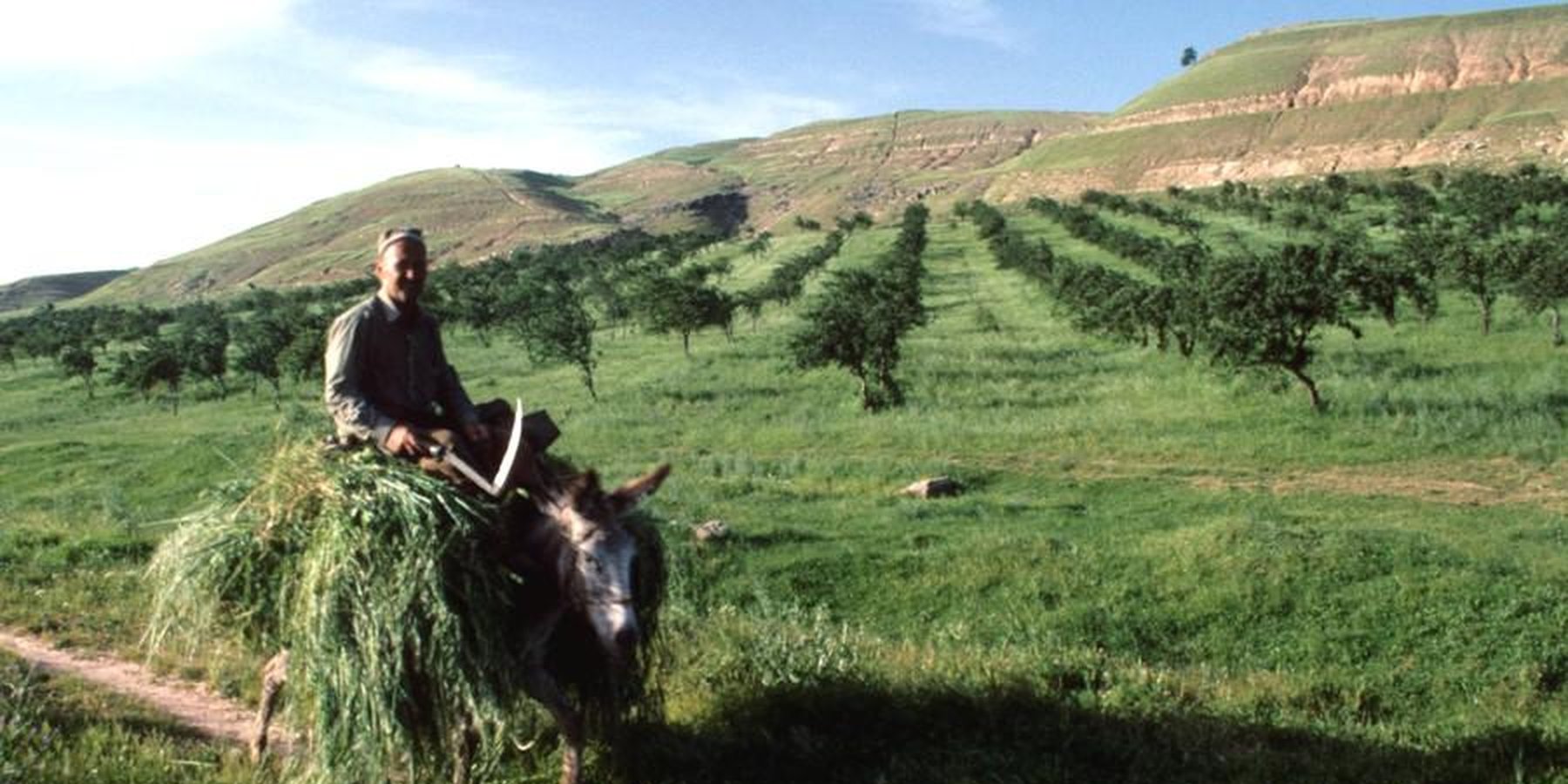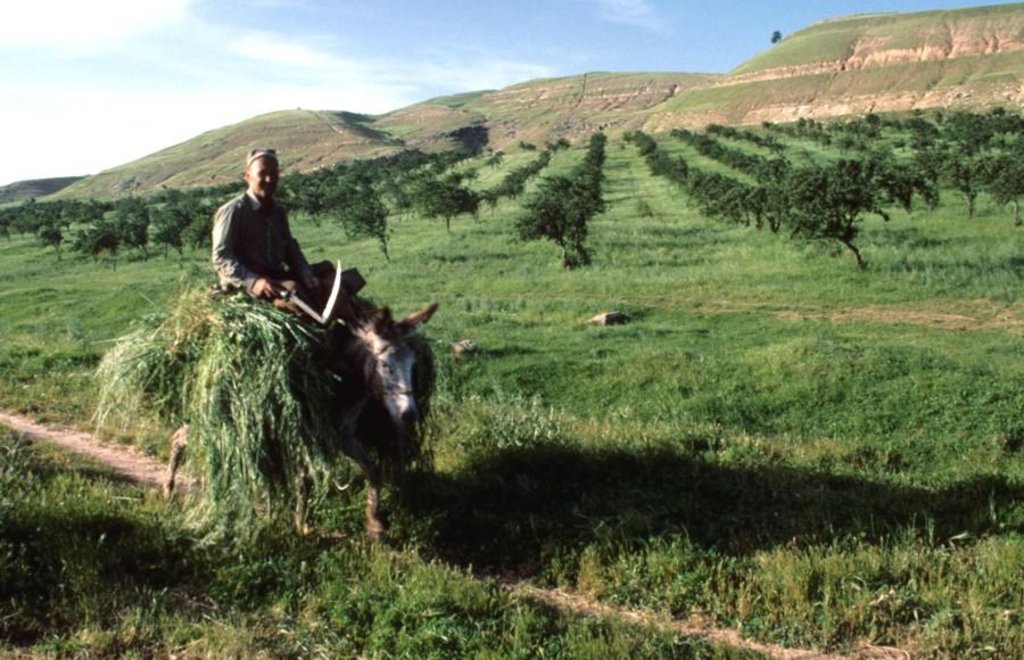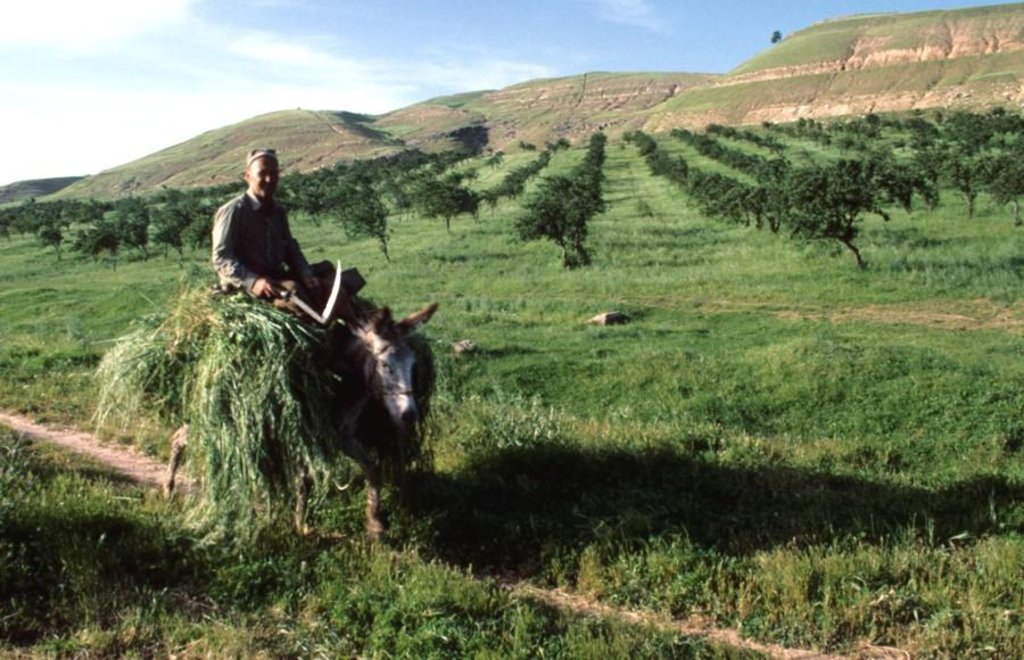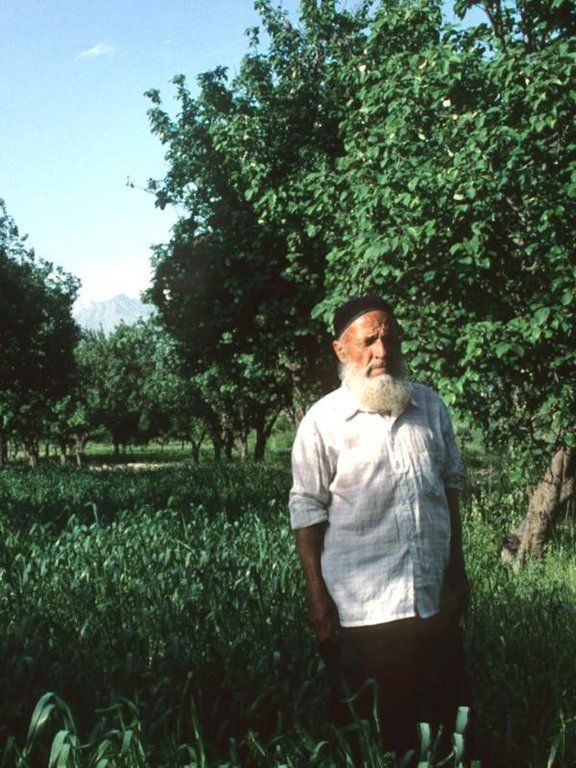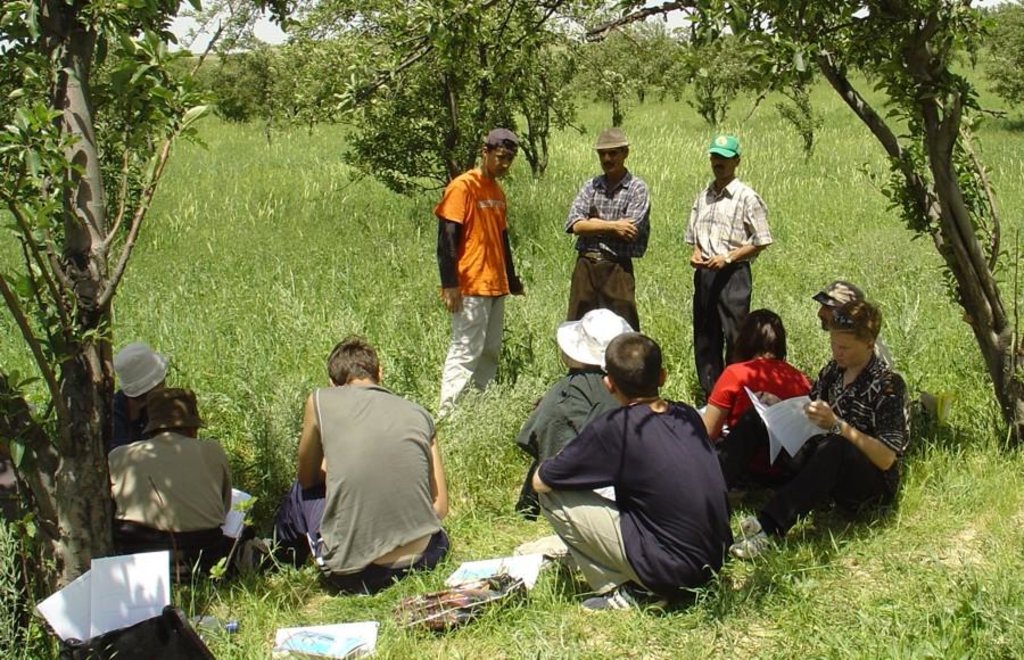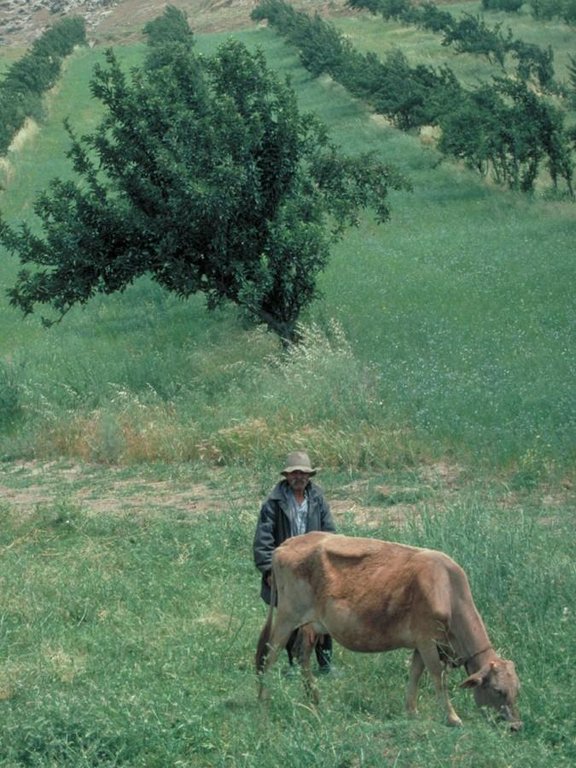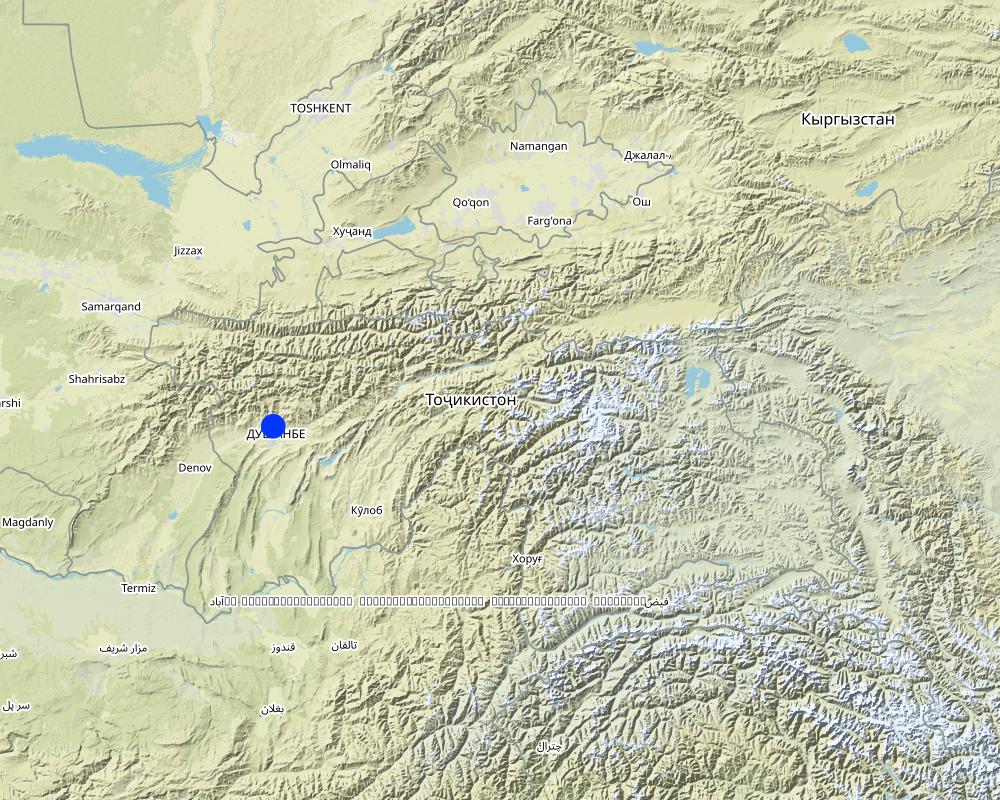Transition from a centralised regime to a local initiative [ຕາຈິກິສະຕານ]
- ການສ້າງ:
- ປັບປູງ:
- ຜູ້ສັງລວມຂໍ້ມູນ: Sanginboy Sanginov
- ບັນນາທິການ: –
- ຜູ້ທົບທວນຄືນ: Alexandra Gavilano, David Streiff, Deborah Niggli, Joana Eichenberger
approaches_2660 - ຕາຈິກິສະຕານ
- ສະຫຼຸບສັງລວມຢ່າງທັງໝົດທີ່ເປັນ PDF
- ສັງລວມເປັນບົດ PDF ເພື່ອສັ່ງພິມ
- ສັງລວມເປັນບົດ ຢູ່ໃນ browser
- ບົດສະຫຼຸບ ສະບັບເຕັມ (ບໍ່ມີແບບຟອມ)
- Transition from a centralised regime to a local initiative: Nov. 2, 2021 (public)
- Transition from a centralised regime to a local initiative: April 4, 2018 (inactive)
- Transition from a centralised regime to a local initiative: Aug. 7, 2017 (inactive)
- Transition from a centralised regime to a local initiative: July 5, 2017 (inactive)
ເບິ່ງພາກສ່ວນ
ຂະຫຍາຍທັງໝົດ ຍຸບທັງໝົດ1. ຂໍ້ມູນທົ່ວໄປ
1.2 ລາຍລະອຽດ ການຕິດຕໍ່ ຂອງບຸກຄົນທີ່ຊັບພະຍາກອນ ແລະ ສະຖາບັນ ການມີສ່ວນຮ່ວມ ໃນການປະເມີນຜົນ ແລະ ເອກະສານ ຂອງວິທີທາງ
ຊື່ຂອງໂຄງການ ທີ່ອໍານວຍຄວາມສະດວກ ໃນການສ້າງເອກກະສານ ຫຼື ປະເມີນດ້ານແນວທາງ (ຖ້າກ່ຽວຂ້ອງ)
Book project: where the land is greener - Case Studies and Analysis of Soil and Water Conservation Initiatives Worldwide (where the land is greener)ຊື່ຂອງໂຄງການ ທີ່ອໍານວຍຄວາມສະດວກ ໃນການສ້າງເອກກະສານ ຫຼື ປະເມີນດ້ານແນວທາງ (ຖ້າກ່ຽວຂ້ອງ)
Pilot Program for Climate Resilience, Tajikistan (WB / PPCR)ຊື່ຂອງ ສະຖາບັນການຈັດຕັ້ງ ທີ່ອໍານວຍຄວາມສະດວກ ໃນການສ້າງເອກກະສານ ຫຼື ປະເມີນແນວທາງ (ຖ້າກ່ຽວຂ້ອງ)
Soil Science Institute (Soil Science Institute) - ຕາຈິກິສະຕານ1.3 ເງື່ອນໄຂ ຂອງການນໍາໃຊ້ເອກກະສານຂໍ້ມູນ ຂອງ WOCAT
ຜູ້ສັງລວມ ແລະ ບັນດາຜູ້ຕອບແບບສອບຖາມ ຍອມຮັບໃນເງື່ອນໄຂ ການນໍາໃຊ້ຂໍ້ມູນເອກະສານ ທີ່ສ້າງຂື້ນ ໂດຍຜ່ານ ອົງການ WOCAT:
ແມ່ນ
1.4 ເອກະສານອ້າງອີງ (ຫຼາຍ) ກັບແບບສອບຖາມ (ຫຼາຍ) ເຕັກໂນໂລຢີ ຂອງດ້ານການຄຸ້ມຄອງ ດິນແບບຍືນຍົງ
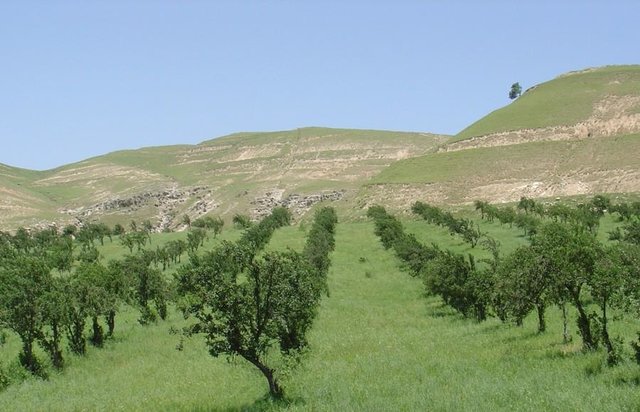
Orchard-based agroforestry [ຕາຈິກິສະຕານ]
An agroforestry system where legumes and cereals are planted in fruit orchards, giving simultaneous production and conservation benefits.
- ຜູ້ສັງລວມຂໍ້ມູນ: Loes Masselink
2. ພັນລະນາ ແນວທາງການຄຸ້ມຄອງນໍາໃຊ້ດິນແບບຍືນຍົງ
2.1 ການອະທິບາຍ ໂດຍຫຍໍ້ ຂອງວິທີທາງ
A land use system established during the previous authoritarian regime of the Soviet Union is now being adapted to the farmers' needs via their own initiative.
2.2 ການອະທິບາຍ ລາຍລະອຽດ ຂອງວິທີທາງ
ການອະທິບາຍ ລາຍລະອຽດ ຂອງວິທີທາງ:
Aims / objectives: This case study compares two approaches which both contributed to the development of the current orchard-based agroforestry system: (1) Soviet approach: the previous state-run dictatorial system of the soviet times and (2) Farmers initiative: the current bottom-up approach. Farmers from the hilly Faizabad region with its deep and highly erodible loess soils had traditionally combined the cultivation of beans and wheat with fruit trees. During the 1980s the Soviet administration decided to intensify apple production in this area and to establish orchards on a large scale, making use of the well suited environmental conditions. The system introduced, comprised of densely planted purestand orchards, mechanically constructed terraces (where the slopes required this), and an irrigation system. Establishment was conducted through a top-down/authoritarian approach, and all inputs for implementation and maintenance were provided by the state. Farmers worked as employees on the state farms and received cash wages.
Methods: After the collapse of the Soviet Union and the start of the civil war, Tajikistan suffered from acute food shortages. In 1993, the Tajik government lifted the prohibition on planting wheat in rainfed areas. Farmers renting the land of the former state farms began to revert to intercropping annual crops, mainly wheat and beans, between thinned rows of apple trees. This was for both household use and for sale at the market. The initiative came from the farmers, and reflected the traditional system of production. However the pumping station and irrigation system have not been working for the last 10 years and therefore supplementary irrigation has not been available. In contrast to former times, decision-making, management activities, and provision of inputs/finance are all carried out by the land users themselves. In some cases, marginal farmers received incentive support from NGOs or from the World Food Programme. Systematic assistance from extension services, financial support to purchase pesticides or fertilisers, and investment to restore the irrigation system would all help to improve the agroforestry system and thus increase yields.
2.3 ຮູບພາບຂອງແນວທາງ
2.5 ປະເທດ / ເຂດ / ສະຖານທີ່ບ່ອນທີ່ແນວທາງໄດ້ຖືກນໍາໃຊ້
ປະເທດ:
ຕາຈິກິສະຕານ
ພາກພື້ນ / ລັດ / ແຂວງ:
Faizabad
Map
×2.6 ວັນທີເລີ່ມຕົ້ນ ແລະ ສິ້ນສຸດ ການຈັດຕັ້ງປະຕີບັດ ວິທີທາງ
ສະແດງປີຂອງການເລີ່ມຕົ້ນ:
1993
2.7 ປະເພດຂອງແນວທາງ
- ພື້ນເມືອງ / ທ້ອງຖີ່ນ
2.8 ເປົ້າໝາຍ / ຈຸດປະສົງຫຼັກ ຂອງການຈັດຕັ້ງປະຕິບັດ ວິທີທາງ
The previous Soviet approach aimed to increase apple production in a region with ideal environmental conditions. The current approach used by farmers aims to make more intensive use of agricultural lands through an agroforestry system, and especially to provide food security by growing annual crops between the trees.
The SLM Approach addressed the following problems: - Soviet times: the original problems addressed by the authorities during the soviet era were how to increase agricultural production, without consideration of the needs of the local rural population. - Post-soviet period: in 1993, when the soviet era ended, and the prohibition on cultivation of wheat was lifted, the underlying problem was a shortage of food, especially of wheat.
2.9 ເງື່ອນໄຂອໍານວຍ ຫຼື ຂັດຂວາງການປະຕິບັດຂອງເຕັກໂນໂລຢີ / ເຕັກໂນໂລຢີການນໍາໃຊ້ຕາມແນວທາງ
ມີຄວາມສາມາດ / ເຂັ້າເຖິງຊັບພະຍາກອນດ້ານການເງິນ ແລະ ການບໍລິການ
- ເຊື່ອງຊ້ອນ
1) Soviet Approach: The establishment and maintenance of the irrigation system, terraces and the orchards themselves required high financial input.
2)Farmers' initiative: Lack of funds for fertilizers, manure (which is burned as fuel for heating) and pesticides.
Treatment through the SLM Approach: 1) Equipment, seedlings and salaries were all provided by the central Soviet state.
2) Improved fertility management: farmers developed cost-effective practices such as crop rotation and fallow periods etc.
ກ່ຽວກັບກົດໝາຍ (ສິດນໍາໃຊ້ດິນ, ສິດນໍາໃຊ້ນໍ້າ)
- ເຊື່ອງຊ້ອນ
The existing land ownership, land use rights / water rights hindered a little the approach implementation Allowing cropping on the farms was the first step; then land use rights were moved from state to individual farmers. While those orchards, which are still managed as state farms, are often not well looked after, renting of land and issuing of landholder certificates, generally leads to improved orchard management. However, access to land belonging to state farms (through rental agreements) is limited.
3. ການມີສ່ວນຮ່ວມ ແລະ ບົດບາດຂອງພາກສ່ວນທີ່ກ່ຽວຂ້ອງທີ່ໄດ້ມີສ່ວນຮ່ວມ
3.1 ຜູ້ມີສ່ວນຮ່ວມ ໃນວິທີທາງ ແລະ ພາລະບົດບາດ ຂອງເຂົາເຈົ້າ
- ຜູ້ນໍາໃຊ້ດິນໃນທ້ອງຖິ່ນ / ຊຸມຊົນທ້ອງຖິ່ນ
- ຄູອາຈານ / ນັກຮຽນ / ນັກສຶກສາ
- ພະນັກງານຂັ້ນສູນກາງ (ຜູ້ວາງແຜນ, ຜູ້ສ້າງນະໂຍບາຍ)
3.2 ການມີສ່ວນຮ່ວມຂອງຜູ້ນໍາໃຊ້ທີ່ດິນໃນທ້ອງຖິ່ນ / ຊຸມຊົນທ້ອງຖິ່ນໃນໄລຍະທີ່ແຕກຕ່າງກັນຂອງແນວທາງ
| ການລວບລວມ ເອົາຜູ້ນໍາໃຊ້ດິນ ໃນທ້ອງຖິ່ນ / ຊຸມຊົນທ້ອງຖິ່ນ | ໃຫ້ລະບຸ ຜູ້ໃດທີ່ມີສ່ວນຮ່ວມ ໃນແຕ່ລະກິດຈະກໍາ? | |
|---|---|---|
| ການເລີ່ມຕົ້ນ / ແຮງຈູງໃຈ | ບໍ່ມີ | Involvement during the current approach: self-mobilisation, farmers' initiative to increase crop production by intercropping in orchards |
| ການວາງແຜນ | ບໍ່ມີ | Involvement during the Soviet approach: none Involvement during the current approach: farmer's are fully involved using their own initiatives. |
| ການປະຕິບັດ | ບໍ່ມີ | Involvement during the Soviet approach: payment for casual labour. Involvement during current farmers' initiative: interactive/self-mobilisation, responsibility for all steps, technical assistance from extensionists. |
| ຕິດຕາມກວດກາ / ການປະເມີນຜົນ | ບໍ່ມີ | Involvement during the Soviet approach was interactive, via observations, public meetings, workshops, etc. Involvement during current farmer's initiative: includes self-mobilisation, interactive, responsibility for all the steps, technical assistance from external sources. |
| Research | ບໍ່ມີ | Involvement during the Soviet approach was passive: technology development in the Faizabad Horticulture Institute. Involvement during current farmers' initiative: none. |
3.4 ການຕັດສິນໃຈກ່ຽວກັບການຄັດເລືອກເຕັກໂນໂລຢີຂອງການຄຸ້ມຄອງທີ່ດິນແບບຍືນຍົງ / ເຕັກໂນໂລຢີ
ລະບຸ ຄົນທີ່ຕັດສິນໃຈ ກ່ຽວກັບການຄັດເລືອກຂອງ ເຕັກໂນໂລຢີ / ເຕັກໂນໂລຢີ ຈະໄດ້ຮັບການປະຕິບັດ:
- ຜູ້ນໍາໃຊ້ທີ່ດິນຫຼັກ, ການສະໜັບສະໜູນ ໂດຍຜູ້ຊ່ຽວຊານ ການນໍາໃຊ້ທີ່ດິນແບບຍືນຍົງ
ອະທິບາຍ:
Soviet approach: decisions made by the state and local authorities. Current farmer's initiative: decisions made mainly by land users themselves supported by specialists.
Decisions on the method of implementing the SLM Technology were made by mainly by land users supported by SLM specialists. Soviet approach: decisions made by technical specialists. Current farmer's initiative: decisions made mainly by land users supported by agricultural extension service (technical assistance).
4. ການສະໜັບສະໜູນທາງດ້ານວິຊາການ, ການສ້າງຄວາມສາມາດ, ແລະ ການຈັດການຄວາມຮູ້.
4.1 ການສ້າງຄວາມສາມາດ / ການຝຶກອົບຮົມ
ຜູ້ນໍາໃຊ້ທີ່ດິນ ຫຼື ພາກສ່ວນກ່ຽວຂ້ອງອື່ນໆ ໄດ້ຮັບການຝຶກອົບຮົມບໍ່?
ແມ່ນ
ໃນຫົວຂໍ້:
Training was provided on-the-job, by public meetings and through courses. Training focused on improving irrigation, tree planting practices and tree management. Training conducted during the establishment of the orchards was useful and adequate. No training was given (naturally) in intercropping of wheat and other cereals between the rows of apple trees the farmers??? initiative. However in order
4.2 ການບໍລິການໃຫ້ຄໍາປຶກສາ
ເຮັດຜູ້ໃຊ້ທີ່ດິນມີການເຂົ້າເຖິງການບໍລິການໃຫ້ຄໍາປຶກສາ?
ແມ່ນ
ອະທິບາຍ / ຄວາມຄິດເຫັນ:
Key elements: For running the orchards during Soviet times a top-down/authoritarian approach was used
4.3 ສະຖາບັນການສ້າງຄວາມເຂັ້ມແຂງ (ການພັດທະນາອົງການຈັດຕັ້ງ)
ສະຖາບັນ ໄດ້ຮັບການສ້າງຕັ້ງຂື້ນ ຫຼື ໄດ້ຮັບການສ້າງຄວາມເຂັ້ມແຂງ ໂດຍການຈັດຕັ້ງປະຕິບັດ ວິທີທາງບໍ່?
- ບໍ່ມີ
4.4 ຕິດຕາມກວດກາ ແລະ ປະເມີນຜົນ
ການຈັດຕັ້ງປະຕິບັດ ວິທີທາງ ໄດ້ມີການປະເມີນຜົນ ແລະ ຕິດຕາມບໍ?
ແມ່ນ
ຄວາມຄິດເຫັນ:
bio-physical aspects were ad hoc monitored by 0 through observations; indicators: erosion and crop growth - sedimentation and plant development
economic / production aspects were regular monitored by 0 through measurements; indicators: farmers' yield and profit
area treated aspects were ad hoc monitored by 0 through measurements; indicators: None
no. of land users involved aspects were ad hoc monitored by 0 through observations; indicators: None
There were no changes in the Approach as a result of monitoring and evaluation: None under either.
4.5 ການຄົ້ນຄວ້າ
ນີ້້ແມ່ນສ່ວນໜຶ່ງ ການຄົ້ນຄວ້າ ຂອງວິທີທາງບໍ່?
ແມ່ນ
ໃຫ້ຂໍ້ມູນ ເພີ່ມເຕີມ ແລະ ກໍານົດ ຜູ້ໃດເຮັດການຄົ້ນຄວ້າ:
During the original establishment of the orchards, research was conducted. For the new system of intercropping with wheat, research contributed by providing support with respect to choice of varieties.
5. ການສະໜັບສະໜູນທາງດ້ານການເງິນ ແລະ ອຸປະກອນຈາກພາຍນອກ
5.1 ງົບປະມານປະຈໍາປີ ສໍາລັບວິທີທາງ ຂອງການຄຸ້ມຄອງ ທີ່ດິນແບບຍືນຍົງ
ຄໍາເຫັນ (ຕົວຢ່າງ: ແຫຼ່ງຂໍ້ມູນຫຼັກ ຂອງການສະໜອງທຶນ / ຜູ້ໃຫ້ທຶນທີ່ສໍາຄັນ):
Approach costs were met by the following donors: local community / land user(s) (by the farmer's initiative): 100.0%
5.2 ການສະໜັບສະໜູນ ທາງດ້ານການເງິນ / ອຸປະກອນ ສະໜອງໃຫ້ແກ່ຜູ້ນໍາທີ່ດິນ
ຜູ້ນໍາໃຊ້ດິນ ໄດ້ຮັບການສະໜັບສະໜູນ ທາງດ້ານ ການເງິນ / ອຸປະກອນ ໃນການຈັດຕັ້ງປະຕິບັດ ເຕັກໂນໂລຢີບໍ?
ບໍ່ແມ່ນ
5.4 ສິນເຊື່ອ
ໄດ້ປ່ອຍສິນເຊື່ອ ສະໜອງໃຫ້ພາຍໃຕ້ ວິທີການສໍາລັບກິດຈະກໍາ ການຄຸ້ມຄອງ ທີ່ດິນແບບຍືນນຍົງບໍ່?
ແມ່ນ
ເງື່ອນໄຂກໍານົດ (ອັດຕາດອກເບ້ຍ, ຈ່າຍຄືນ, ແລະ ອື່ນໆ) :
Repayment conditions: For the original establishment of the orchards loans were provided by the state at a very low interest rate. Currently, for cultivating cereals and legumes, farmers have access to loans, but the interest rate is very high..
6. ວິເຄາະຜົນກະທົບ ແລະ ສັງລວມບັນຫາ
6.1 ຜົນກະທົບຂອງແນວທາງ
Currently: moderately positive impact on soil and water conservation through the agroforestry system.
Did other land users / projects adopt the Approach?
- ບໍ່
- ມີ, ໜ້ອຍໜຶ່ງ
- ມີ, ພໍສົມຄວນ
- ມີ, ຫຼາຍ
None known.
6.2 ແຮງຈູງໃຈຫຼັກຂອງຜູ້ນໍາໃຊ້ທີ່ດິນໃນການປະຕິບັດການຄຸ້ມຄອງທີ່ດິນແບບຍືນຍົງ
- ການຜະລິດເພີ່ມຂຶ້ນ
This case illustrates the challenges in the transition from state-run large-scale farming to individual management of smaller units. In this case, soviet Tajikistan had established pure-stand orchards. However, in response to acute food shortage during the civil war, farmers started to intercrop wheat and beans in their orchards: a better all-round production/conservation system.
6.3 ຄວາມຍືນຍົງຂອງກິດຈະກໍາວິທີທາງ
ຜູ້ນໍາໃຊ້ ທີ່ດິນ ສາມາດສືບຕໍ່ ການຈັດຕັ້ງປະຕິບັດ ຜ່ານວິທີທາງໄດ້ບໍ່ (ໂດຍປາດສະຈາກ ການຊ່ວຍເຫຼືອ ຈາກພາກສ່ວນພາຍນອກ)?
- ບໍ່ມີ
ຖ້າ ບໍ່ ຫຼື ບໍ່ແນ່ໃຈ, ໃຫ້ອະທິບາຍ ແລະ ຄໍາເຫັນ:
The Soviet approach of orchards managed through state farms effectively died out with the collapse of the Soviet Union: the irrigation system ceased to function and inputs were not provided anymore by the state. Furthermore, the land use system was not adequate.
6.4 ຈຸດແຂງ / ຂໍ້ດີ ຂອງວິທີທາງ
| ຈຸດແຂງ / ຈຸດດີ / ໂອກາດ ຈາກທັດສະນະຂອງຜູ້ປ້ອນຂໍ້ມູນ ຫຼື ບຸກຄົນສຳຄັນ |
|---|
| Farmer's initiative: Farmers get diversified and additional products (grain, apples, beans, hay, etc). (How to sustain/ enhance this strength: The government should support the farmer's initiatives. The marketing system for selling fruits should be better developed.) |
| Farmer's initiative: Farmers themselves are finding a way out of the poverty trap. (How to sustain/ enhance this strength: Land reform should be improved and every farmer should be eligible for land certificates/titles.) |
| Soviet approach: Well managed and controlled land use system with efficient irrigation system, high production, ensured maintenance, provision of fertilisers and technical assistance. |
6.5 ຈຸດອ່ອນ / ຂໍ້ເສຍຂອງແນວທາງ ແລະ ວິທີການແກ້ໄຂໃຫ້ເຂົາເຈົ້າ
| ຈຸດອ່ອນ ຫຼື ຂໍ້ເສຍ ຫຼື ຄວາມສ່ຽງ ໃນມຸມມອງຂອງ ຜູ້ສັງລວມຂໍ້ມູນ ຫຼື ບັນດາຜູ້ຕອບແບບສອບຖາມ | ມີວິທີການແກ້ໄຂຄືແນວໃດ? |
|---|---|
| Farmer's initiative: Further extension of the agroforestry system is limited without support from the extension service | The extension service should provide more inputs. |
| Farmer's initiative: Land use rights: as long as the land still belongs to the state, people have very little motivation to improve it | Privatise the land. |
| Soviet approach: No diversity, mono-cropping system aimed at maximised production; as soon as state support ceased, the system collapsed. |
ຂໍ້ມູນການເຊື່ອມຕໍ່ ແລະ ເນື້ອໃນ
ຂະຫຍາຍທັງໝົດ ຍຸບທັງໝົດການເຊື່ອມຕໍ່

Orchard-based agroforestry [ຕາຈິກິສະຕານ]
An agroforestry system where legumes and cereals are planted in fruit orchards, giving simultaneous production and conservation benefits.
- ຜູ້ສັງລວມຂໍ້ມູນ: Loes Masselink
ເນື້ອໃນ
ບໍ່ມີເນື້ອໃນ


